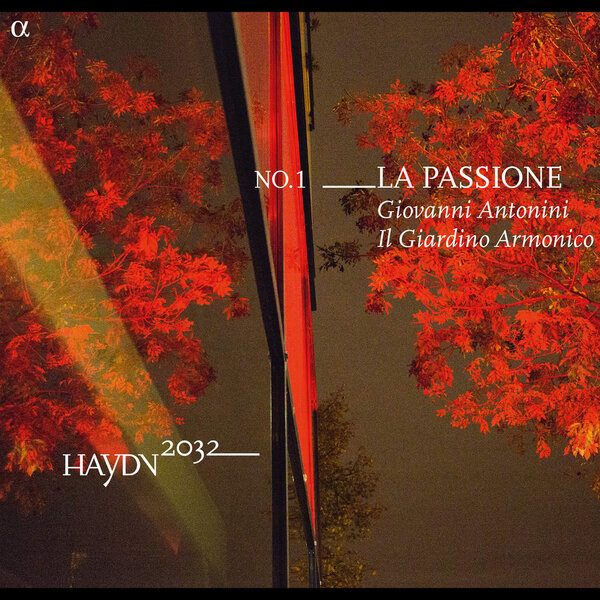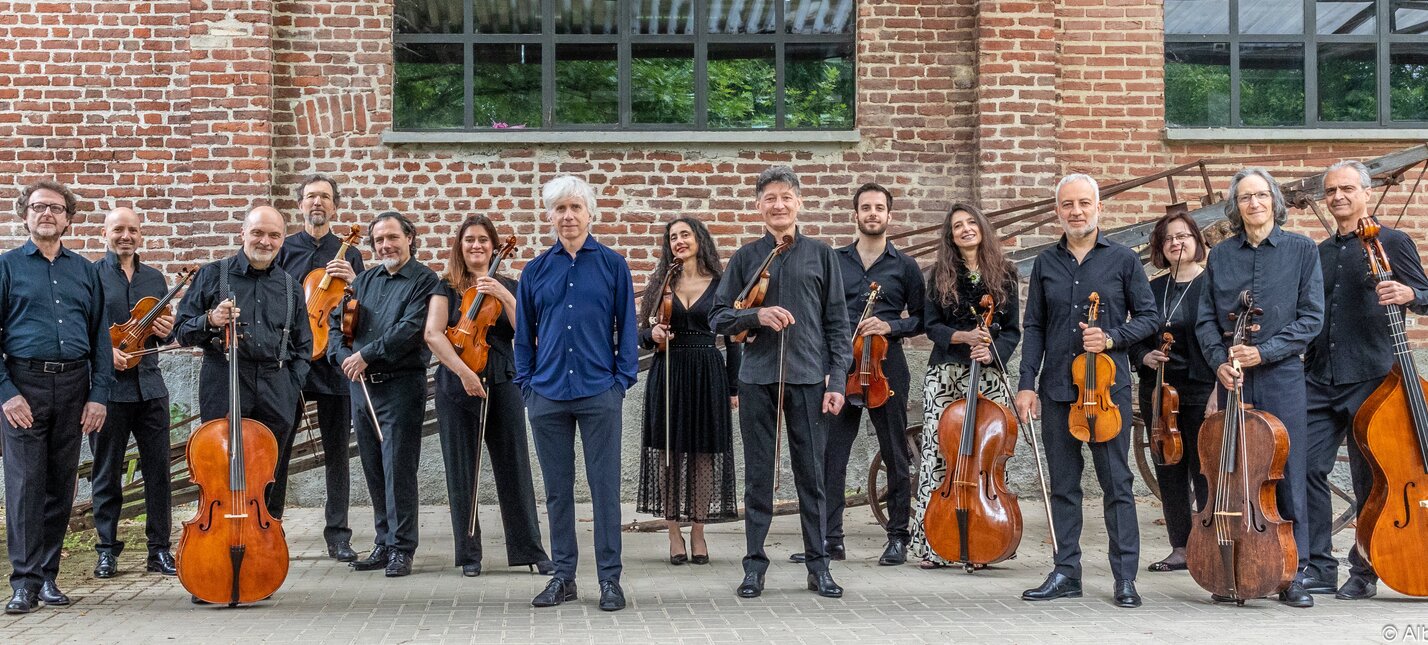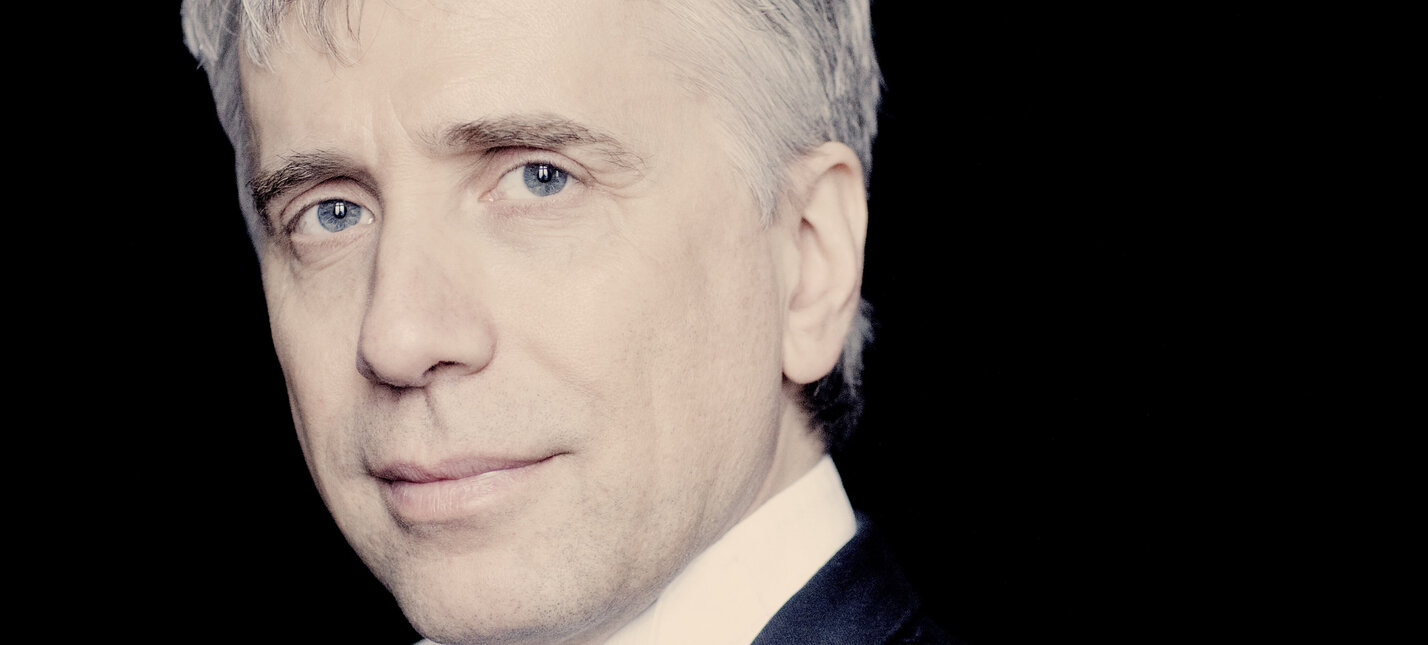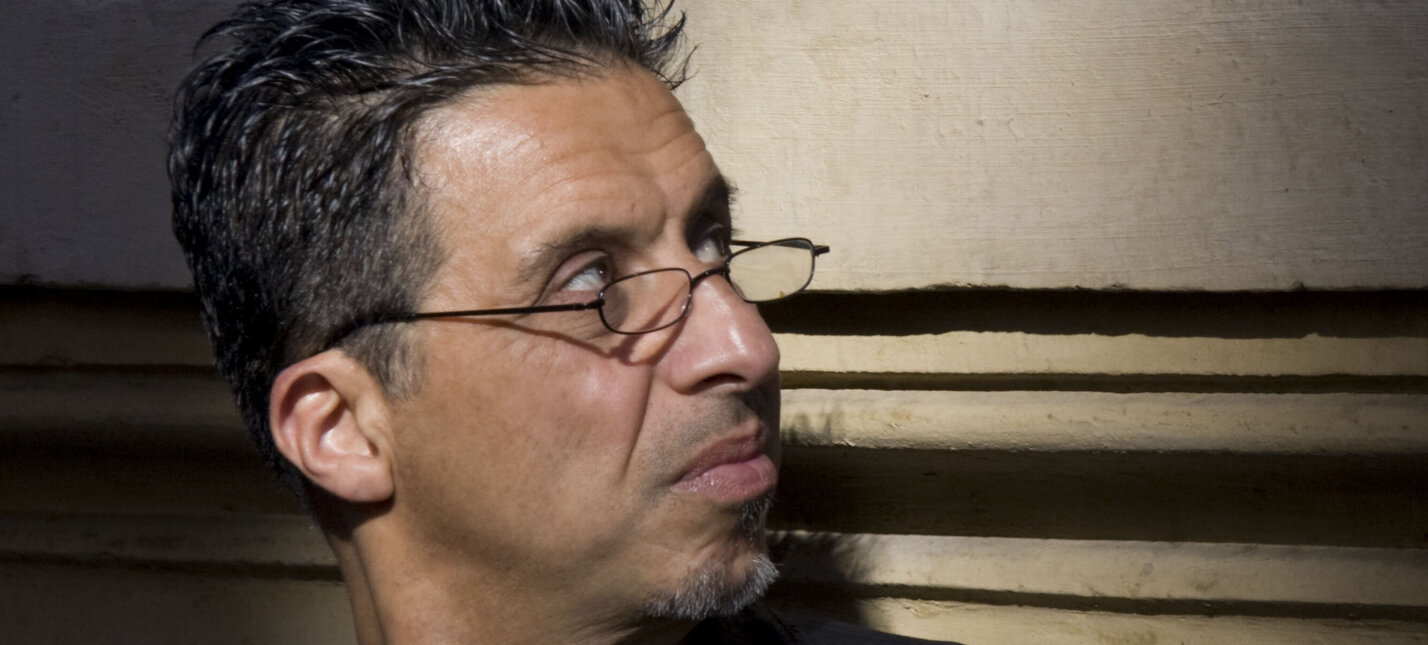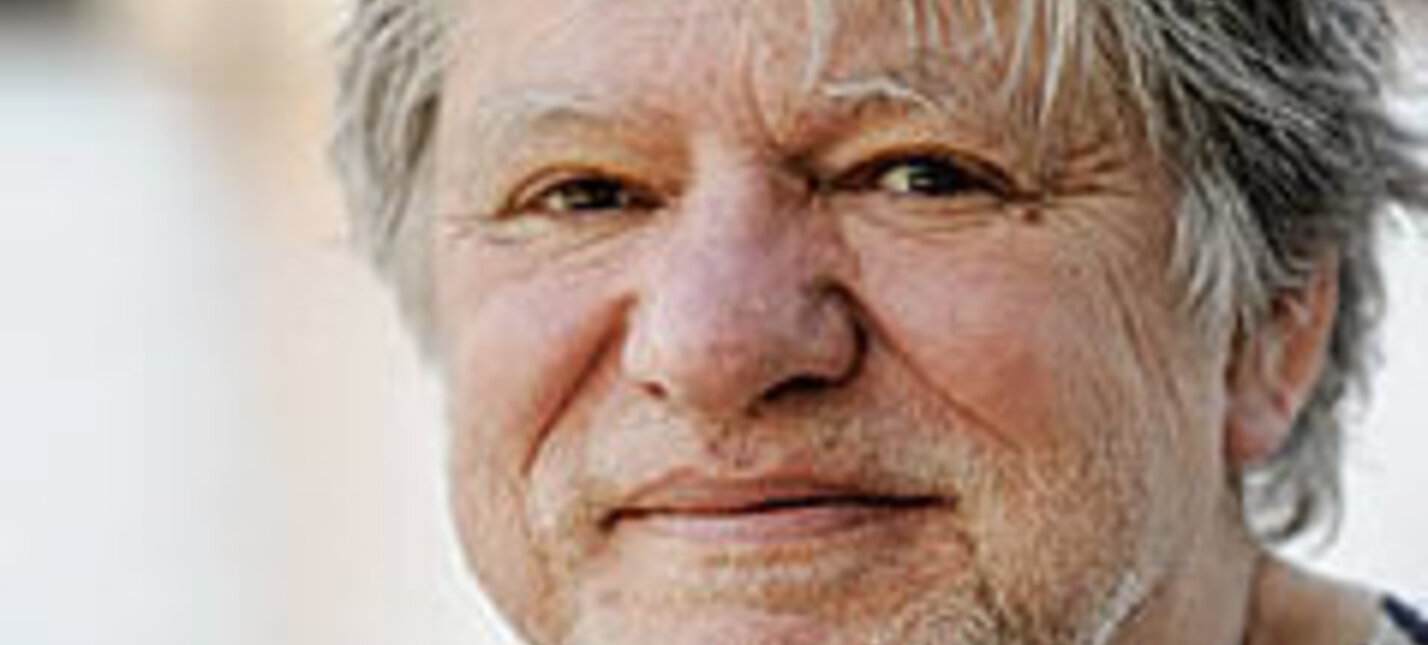NO.1 __LA PASSIONE
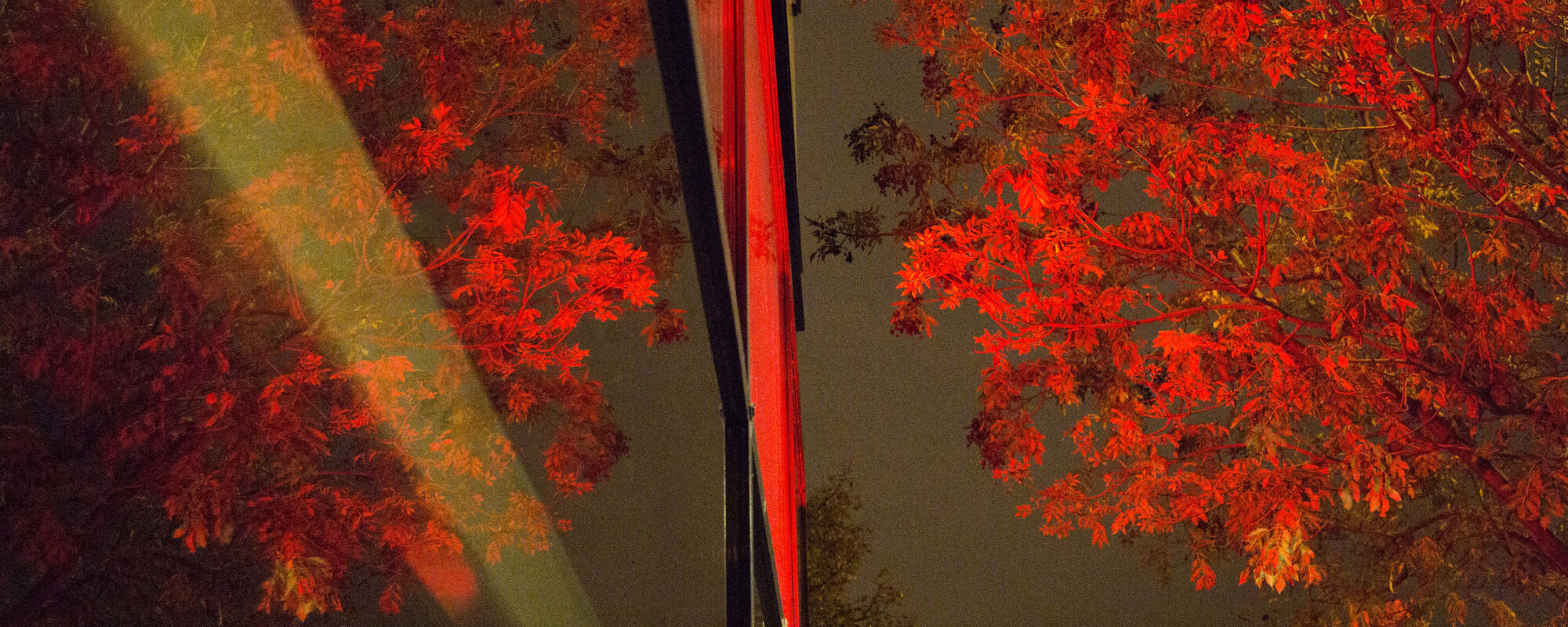
Il Giardino Armonico
Giovanni Antonini, conductor
Bernhard Lassahn, writer
Gueorgui Pinkhassov, photographer
Symphonies No.1, No.39 and No.49
Christoph Willibald Gluck (1714–1787): Don Juan ou Le Festin de Pierre, Ballet Pantomime (1761). Original version
Program
Joseph Haydn (1732–1809): Symphony No.1 in D Major, Hob. I:1 (1757)
Presto / Andante / Finale: Presto
SYMPHONY NO.1 D MAJOR HOB. I:1 (1757)
Time of creation: till 25.11.1759 [1757]
Presto / Andante / Finale: Presto
by Christian Moritz-Bauer
When Joseph Haydn was 17 – that is, in 1749 – he had to leave the choristers' school at St Stephen's in Vienna, the very first place where he had practised as a musician. His voice had long since started to break, and he is also reputed to have carried out a prank by snipping the pigtail off a fellow chorister...
This was followed by years of penury, during which he had to «drag himself around miserably from place to place», although he still exhibited great perseverance when it came to composing and making music («I would never have earned the little I did, had I not continued to pursue my fervour for composition in the night-time; I was never a quick writer, but composed with great care and efforts»). His meeting with Niccolò Porpora was to have far-reaching consequences for him; he not only taught him the «true fundamentals of composition», but also introduced him to aristocratic society. This composer of operas and oratorios of European stature lived at the same address as Haydn in the 'Michaelerhaus' (although it must be said that the latter rented relatively more humble accommodation than the former, in an unheated, draughty garret). The Neapolitan was also in great demand as singing teacher, and by working as his piano accompanist, Haydn was able to benefit increasingly as time went by from the networking opportunities afforded him in the Stadtpalais and at the nearby country estates of the nobility, where he made the acquaintance of many pioneers in the field of music and others who were later to support him in his career, such as Gluck, Wagenseil and Dittersdorf. It is uncertain whether it was in Mannersdorf am Leithagebirge, a fashionable spa of the time, or perhaps elsewhere, but in 1755 Haydn met Baron Carl Joseph Edler von Fürnberg, the most important patron to advance his still fledgling career. The baron invited him to join in his music-making at Schloss Wienzierl in Lower Austria, encouraged him to compose his first string quartets, and finally gave his future career an enormous boost by introducing him to the Counts of Morzin in the persons of Ferdinand Maximilian Franz and, more importantly, his son Karl Joseph Franz, who was in the process of seeking a musical director for his new court chapel. In accordance with the customs of the time, the counts spent their summers at their family seat of Dolní Lucavice near Pilsen, and migrated in the winter to a rented palace in Vienna belonging to Prince Batthyány.
The living conditions which Haydn was able to enjoy during his first paid employment were nothing less than luxurious in comparison with his previous situation. Haydn received free accommodation and an annual salary of 200 guilders, and dined at the officers' table.
Sadly, we know very little else about the half of the year Haydn spent in western Bohemia. Posterity cannot even agree on the date of his appointment: some believe it was in 1759, while others put it earlier. And yet this riddle appears quite easy to solve, provided one is prepared to use a little imagination and to trust in the assertion made to Georg August Griesinger by the composer years later that he «vividly remembered» without any doubt whatsoever that the work we shall be examining below was indeed the first of his symphonies.
A score for what is considered to be the second-oldest Haydn symphony (Hob. I:37), which was written by a professional copyist from Vienna and has been preserved in Krumau in southern Bohemia, is dated [1]758. Since it was the custom of the time that a work written by a composer engaged in the service of prince was not permitted to appear in the music market less than a year after its completion, then it follows that it – and indeed the Hob. I:1 which preceded it – were written in 1757. Since, prior to his appointment as director of Morzin's court music, Haydn «probably had no occasion to write symphonies or other great works, especially with parts for wind instruments», it is safe to conclude that it was during this very period that he was engaged.
It is difficult to judge the extent to which Haydn, who was largely self-taught when it came to learning his craft, sought inspiration from others before or during the composition of his early symphonic works, or merely drew from his own inspiration.
Whichever is the case, the beginning of Symphony No. 1 has long been associated with the so-called Mannheim School and the whole-orchestra crescendo which became its trademark. But this sort of opening gesture with a line set in tutti, elevated above the drumming basses, which rises in both pitch and dynamics in the first few bars, can be found not only in the works of this particular school, but also in those of many Viennese contemporaries, and all draw in turn from the well of Italian operatic symphonies, whose three-movement form is also adopted in this debut work.
His energy and the exuberant wealth of high-contrast thematic material, the internal agitation expressed through tremoli, virtuoso runs with contrapuntal interactions and engaging horn fanfares: all of this expresses in notes the spirit of optimism, the passion of a young artist who appears truly inspired.
Surely this is enough to quell all analytical criticism? Some have even rhapsodised about it; Ludwig Finscher, for instance, who, when describing the initial Presto, spoke of a «concentration of the form – a fully-flared sonata movement with a succinct development», the «dramatic eruption of music» which prepared the listener for the reprise, and a masterly «structure with great economy of detail».
The central Andante, where (in the early classical manner) the wind instruments fall silent and particular importance is ascribed to a triplet motif, introduced by the first violins and later recurring in dialogue form, «establishes once and for all the inimitable sprightly profundity that is so characteristic of Haydn's interior Andantes.» (James Webster)
In the final movement of Hob. I:1, again marked 'Presto', Haydn sets off a short-lived – but all the more brilliant for that – firework with a D major triad which soars like a rocket; although this has something of the quality of a typical wrap-up, it nonetheless stands out on account of a few (absolutely deliberate) unexpected and unpredictable features, such as the 'recycling of motifs' which extends over more than one movement prior to the reprise.
Joseph Haydn served the Count of Morzin for only a few years: it is said that after suffering financial losses, the Count had to make cut-backs before finally disbanding his orchestra altogether. It is unclear how aware Haydn was that the end of his directorship was approaching. At any rate, he re-entered the marriage market, even though his contract with the Morzin family is thought to have expressly forbidden him from marrying. Haydn had fallen in love with the daughter of the wig-maker Johann Peter Keller from the Viennese suburb of Landstrasse. Her name was Therese, and he had been her piano tutor. But instead of entering the marriage bond, she joined a Piarist order. Why? We cannot be certain. One possible explanation might be that Therese's parents felt they could only afford one dowry, and decided that the right to marry should be reserved for their older daughter. Her name was Maria Anna Aloysia, and she exchanged rings with Haydn on 26 November 1760, despite the fact that their temperaments were totally unsuited. She allegedly had a tendency towards extravagance, was quarrelsome, and didn't have an artistic bone in her body. Shortly after the wedding, she is said to have proclaimed that she didn't care a fig whether her husband was a composer or a cobbler. The marriage remained childless and lasted for nearly forty years, until Maria Anna's death in 1800.
1 This and the other Haydn quotes which follow are taken from the so-called 'Skizze einer Autobiographie' which, completed on 6 July 1776 and written in the form of letters to a Mademoiselle Leonore, was probably intended for inclusion in 'Das gelehrte Österreich', a lexicographical work by Ignaz de Luca, a writer and expert in constitutional law.
2 That it was the younger Morzin who engaged Haydn at the time can also be deduced from the autobiographical sketch of 1776, in which the author refers to the 'Recommendation of the 'Sel.' [i.e. deceased] Mr. von Fürnberg to the Count of Morzin'. If this had in fact been a reference to the elder Morzin (who died in 1763), would not he too have been referred to as deceased?
3 In addition, when Haydn looked through a list of his symphonies in later life on behalf of the publishing house Breitkopf & Härtel, he marked the earliest group 1757-67.
4 Ludwig Finscher, Joseph Haydn und seine Zeit, Laaber 2000, p. 130.
5 The latest findings suggest that about fourteen symphonies were written before he answered the call of Prince Esterházy. According to the traditional manner of counting them, these are (albeit in a different chronological order) Nos. 1, 37, 4, 5, 25, 32, 33, 11, 3, 107 ('A'), 2, 15, 10 and 27.
6 In The Symphonic Repertoire Vol. II – The First Golden Age of the Viennese Symphony: Haydn, Mozart, Beethoven and Schubert, Bloomington 2002, A. Peter Brown cites Florian Leopold Gassmann's symphony for the opera L'Issipile (1758) as the work which best bears comparison with the start of the Haydn symphony.
7 Finscher, Joseph Haydn und seine Zeit, p. 133.
to the shop
Joseph Haydn (1732–1809): Symphony No.39 in g Minor, Hob. I:39 (1765)
Allegro assai / Andante / Menuet. Trio / Finale: Allegro di molto
SYMPHONY NO.39 G MINOR HOB. I:39 (1765)
Time of creation: till 1770 [may-sept.? 1765]
Allegro assai / Andante / Menuet. Trio / Finale: Allegro di molto
by Christian Moritz-Bauer
With Hob I:39, this programme (dedicated to passion, and indeed taking «La Passione» as its title) offers not only another act of creativity – Haydn's first symphonic work from 1757 is followed by the first to be written in a minor key – but also a gem of a very special kind: the composer's sole contribution to the body of G minor symphonies of the Viennese Classical School and its historic predecessors, created according to all the rules of the art. Consequently, this is a suitable opportunity at which to make a brief digression and consider a group of works which originated during the two great waves of 1758–1773 and 1785–1788, the second of which was very probably influenced by the first; works which have established themselves in the collective memory of musicologists, performers and music-lovers as constituting arguably the most dramatic of the symphonies from that period. Professor Emeritus Dr. Klaus Hortschansky, who is inter alia Vice-President of the Joseph Haydn Institute in Cologne, made the following observation:
From the time when Hermann Abert (1871–1927) revised the major biography of Mozart by Otto Jahn (1813–1869) in 1919–1921 – if not before – particular attention has been paid to the G minor symphonies of Mozart as well as Haydn, and they have been ascribed a more profound and meaningful level of sensitivity and expression than many another work. There is an abundance of evidence for this in the academic but also the popular literature. For instance, whilst in 1856 Otto Jahn devoted only a single sentence to Mozart's 'little' Symphony in G minor (KV 183), Abert took almost four pages to describe «that passionate, pessimistic mood […] which has found expression in Mozart's work again and again, ever since 'Lucio Silla'.»
In the wake of Abert's biography, which played a fundamental role in the reappraisal of Mozart after the First World War, attention soon shifted to the symphonies in G minor of other composers, such as Johann Christian Bach (1735–1782), Johann Baptist Vanhal (1739–1813), Leopold Kozeluch (1752-1818) and Franz Beck (1723–1809). Many a composer was valued more highly than before in the literature simply because he had written a symphony in G minor. In Susanne Clercx's 1948 monograph on Pierre van Maldere, for instance, her discussion of his Symphony in G minor [No. 1 from his Op. IV, which appeared in 1764] takes up by far the largest proportion of her review of his symphonic oeuvre. A debate flared up in both the general and the monographic literature devoted to individual composers about the significance of the role played by their symphonies in G minor within their individual oeuvre as well as within the context of the works' general intellectual and historical background. Two different models of thinking emerged again and again, which are described below in very simplified terms […]:
Model I: Each and every symphony in G minor arises per se from a 'romantic crisis' experienced by the composer. As a general principle, his personal emotional input into a work in the minor key ought to be comparatively greater than in the case of other works, i.e. those in a major key, and it is not uncommon for a work in minor mode to reveal something of the composer's inner self.
This method of interpretation is already to be found in the work of Hermann Abert with reference to Mozart's personal temperament, and is taken one stage further by Howard Chandler Robbins Landon in a paper delivered in Paris in 1956 entitled, 'La crise romantique dans la musique autrichienne'. In it, Robbins Landon gathers together a few precursors to Mozart's 'little' Symphony in G minor which were composed in and around Vienna in ca. 1770 and attributes them to a 'school' of composers pursuing compositional reform. This implies that the composer's personal crisis is also a 'crise émotionelle collective'.
Model II: Every Symphony in G minor is a consequence of the 'Sturm und Drang' wave emanating from Herder and the north German poets around Klopstock, as the composers now wished to adopt for themselves its over-abundance of emotion and conventions of rule-breaking aesthetics, which promised to satisfy their need for expression. A starting-point for such an interpretation is Hans Heinrich Eggebrecht's essay on 'The principle of expression in the musical counterpart of Sturm und Drang', which discusses the shift away from the theory of affect to a new aesthetics of expression.
While the adherents of these models, originally employed to distinguish the works from other, less expressive instrumental pieces of the time, have declined in number considerably over the years, nevertheless – at least as far as the 'Sturm und Drang' theory is concerned – despite repeated efforts by musicologists, it has still not proved possible to find enduring substitutes, although these same musicologists have meanwhile succeeded in shedding some light on the past when it comes to clarifying previously problematic questions of dating.
In the case of Joseph Haydn's Symphony in G minor, in addition to the catalogue of works produced by the composer in late 1765, in which the work appears under the addenda to the second surviving page, an examination of the 'Catalogue de M. de Keess à Vienne', the so-called Keess catalogue, has proved particularly helpful. This catalogue of manuscripts of Haydn symphonies once owned by Franz Bernhard Ritter von Keess, from the start of his career until 1789, is in more or less chronological order and lists No. 39 in the Hoboken catalogue between the two symphonies dated 1765 for which autograph scores survive (No. 29 in E major and No. 28 in A major). Sonja Gerlach has cited the use of four instead of the usual two horns as another clue to the period during which they were written – an option available to Haydn from the May of that year (for the first time since 1763) and which he was to take advantage of again before the end of that year in his composition of No. 31. But unlike in the latter D major symphony, Haydn hardly ever allows the two pairs of horns, one in B-flat alto and one in G, to be heard together, but usually only in alternation with one another, in this «work of genius» referred to by Gerlach as a «proper string symphony». So why go to the expense?
In this specific case, the use of a second pair of horns was related to the decision made before he began writing the work that it would be in a minor key, and to the contemporaneous idea of utilising the sound of the horns in the secondary themes of the opening and closing movements, which belonged within the soundscape of the related major key; the horn players would not then have to hurry to adjust the tuning slides of their instruments, whose respective harmonic series restricted their repertoire to certain notes.
So what did someone like Haydn make of the options available to him here in terms of harmony, melody and timbre? The first few bars of the Allegro assai from Hob. I:39 with their «rocking and sighing motion» bring «only the presentation of the minor third and the highlighting of the fifth step of the scale, namely D major. On first impressions, that does not appear to be much», notes Hortschansky, and he appears to have a point, because the coda of the opening theme consists, to a certain extent, merely of a succession of leading-notes demoted to suspended notes which, however, is given the expected «air of drama» by the occasional interpolated seventh. The ingenious nature of the movement becomes apparent only a little later; more precisely, in the middle of the recapitulation of the theme which immediately follows and which begins all too verbatim. For halfway through, there is a sudden shift to B-flat major and, despite this morphing into the other, supposedly brighter mode, the audience suddenly – whether it was prepared for it or not – finds itself completely swept along by the urgent energy and passion of the music, in which not only the repeated descending runs of the violins as they hurtle down the scale, but also a short, powerful exchange between the pairs of horns plays its part. The ambivalence between major and minor is retained, then, throughout all the elements that follow, ensuring that there continues to be conflict between the old and the new/revised motifs and the passages, interpolated by pauses, which are consumed with them.
Even if the following movement with its gentler pace does not maintain the theatricality of its predecessor, this is not «a great disappointment» (H.C. Robbins Landon) by any means; rather, we encounter an Andante danced on tiptoe in 3/8 time, which – very unusually for Haydn – is in the submediant key (i.e. in E-flat major) and can boast many a witty pay-off, including a brief postlude which fades away in a pianissimo.
The minuet conducted by Antonini with strict gestures and performed at a brisk tempo by his fellow musicians with oboe soloes and a trio of horns – first it is the turn of the B-flat alto, then of the G – is followed by an Allegro di molto which is once again bursting with stage effects and which begins with wide interval leaps by the first violins before they give way to the agitated semiquaver repetitions of the second violins and the violas, flashing and sparkling as dynamic contrasts and rhythmic accents surface in this bar or that. Brace yourself for the tumultuous pace of the Lombardy musicians, with only a single passage – which appears all the more curious for that – providing a temporary respite: the intimate violin duet which is taken back to a piano at the beginning of the development.
1 The exclusion of Paris Symphony No. 83, also known as 'La Poule' ('The Hen'), is justifiable because almost immediately – or more precisely from when the 'clucking' second subject is first heard, the major mode gains supremacy over the minor; also, the end of the opening movement, the minuet and the whole of the final movement are in the major variant of the initial G minor.
2 Otto Jahn, W. A. Mozart, Vol. 1, Leipzig 1856, p. 566; Hermann Abert, W. A. Mozart, 7th edition, Vol. 1, Leipzig 1955, pp. 316-319.
3 H. C. Robbins Landon, La crise romantique dans la musique autrichienne vers 1770. Quelques précurseurs inconnus de la symphonie en sol mineur (KV 183) de Mozart, in: Les influences étrangères dans l'œuvre de W.A. Mozart. Colloques internationaux […], Paris 1956, pp. 27-47.
4 ibid. p. 32.
5 In: Deutsche Vierteljahresschrift für Literaturwissenschaft und Geistesgeschichte 29 (1955), pp. 323-349; also in: Hans Heinrich Eggebrecht, Musikalisches Denken. Aufsätze zur Theorie und Ästhetik der Musik, Wilhelmshaven 1977, pp. 69-111 (= Taschenbücher zur Musikwissenschaft 46).
6 Klaus Hortschansky, Die g-Moll-Sinfonie zur Zeit der Wiener Klassik, in: Traditionen - Neuansätze: Für Anna Amalie Abert (1906-1996), edited by Klaus Hortschansky, Tutzing 1997, pp. 329-348, here pp. 330f.
7 Sonja Gerlach, Neues zur Chronologie von Haydns Sinfonien, in: Das symphonische Werk Joseph Haydns. Referate des internationalen musikwissenschaftlichen Symposions Eisenstadt, 13-15 September 1995, edited by Gerhard J. Winkler, Eisenstadt 2000, pp. 15-26, esp. pp. 22ff. (= Wissenschaftliche Arbeiten aus dem Burgenland 103).
8 ibid. p. 25.
9 Hortschansky, Die g-Moll-Sinfonie zur Zeit der Wiener Klassik, p. 340.
10 H. C. Robbins Landon, The Symphonies of Joseph Haydn, London 1955, p. 296.
to the shop
Christoph Willibald Gluck (1714–1787): Don Juan ou Le Festin de Pierre, Ballet Pantomime (1761). Original version
Sinfonia. Allegro / Andante Grazioso / Andante / Allegro forte risoluto / Allegro gustoso / Moderato / Grazioso / Allegro / Moderato – Presto / Risoluto e Moderato / Allegro / Allegro / Allegro / Andante staccato / Larghetto / Allegro non troppo
CHR W. GLUCK: DON JUAN OU LE FESTIN DE PIERRE, BALLET PANTOMIME (1761). ORIGINAL VERSION
Sinfonia. Allegro / Andante Grazioso / Andante / Allegro forte risoluto / Allegro gustoso / Moderato / Grazioso / Allegro / Moderato – Presto / Risoluto e Moderato / Allegro / Allegro / Allegro / Andante staccato / Larghetto / Allegro non troppo
Abridged version of:
Sybille Dahms, «A few queries about the original version of Gluck and Angiolini's Don Juan»,
in: Christoph Willibald Gluck und seine Zeit (Christoph Willibald Gluck and his times), edited by Irene Brandenburg, Laaber 2010, pp. 148-157.
When the pantomime ballet Don Juan was performed for the first time on 17 October 1761 with music by Christoph Willibald Gluck and choreography by Gasparo Angiolini, only a few members of the audience can have realised that they were witnessing an event which would later be recalled as a milestone in the history of ballet. Le Festin de Pierre / The Stone Guest's Banquet, as the premiere was entitled, was one of the first fully-formed ballets en action, for here a complete dramatic storyline played out without any spoken or sung text, but using only the newly developed language of gesture and facial expression: in the language of the body en action, as Noverre dubbed it in his Lettres sur la Danse et sur les Ballets. In Don Juan, the silent body language was complemented by Gluck's perfectly matched score, which supplied all the semantic qualities required as substitutes for the spoken word. «Music is an essential component of a pantomime ballet. It is the music which talks; we merely make the gestures», wrote Angiolini in his foreword to the programme for Don Juan.
The climate for establishing innovations in the arts in general, and the theatre in particular, was especially propitious in Vienna at that time. In 1754, Count Giacomo Durazzo, a diplomat and passionate theatre-lover born in Genoa, had been appointed Director of the Imperial Theatres in Vienna – the Burgtheater (the theatre most commonly frequented by the imperial family and the nobility) and the Theater am Kärntnertor (popular with the bourgeoisie/middle classes). As the Austrian State Chancellor, the Prince of Kaunitz, introduced changes to Austria's foreign policy which resulted in a rapprochement with France, Durazzo made his own attempt to strengthen the ties between the two countries' cultural lives, and as an Enlightenment figure, was particularly keen to initiate constructive engagement with artists and intellectuals from Paris. His most significant correspondent in the French capital was the multi-talented Charles Simon Favart, who not only supplied him with libretti and sheet music for comedies and opéras-comiques, but also with the actors, dancers, set designers and stage technicians to go with them, and helped him to establish a French theatre company at the Burgtheater. At the same time, Durazzo surrounded himself with a select group of artists, intellectuals and amateurs of noble birth, who supported and encouraged him in his efforts to establish an autonomous Viennese theatre, a theatre which was to combine the new spirit of the Enlightenment with the tradition of Austrian folk theatre and Italian opera. From 1761, Gluck adopted a leadership role in this inspired and inspiring circle, with librettist and adventurer Ranieri de' Calzabigi by his side. Another member of the circle was the Viennese ballet master Franz Anton Hilverding, who began as early as in the 1750s to experiment with folksy Austrian genre ballets, which corresponded entirely to the type of production Durazzo was keen to stage; he was soon assisted in this by his brilliant pupil, a native of Florence called Gasparo Angiolini. When, in 1758, Hilverding answered the call of Tsarina Elizabeth and accepted the post of ballet master at the Russian court, Angiolini succeeded him as master of ballet at the Viennese theatres, whilst continuing to occupy the position of 'premier danseur' or lead soloist.
There is evidence of a close working relationship between Angiolini and Gluck from 1758; both began by experimenting with small genre ballets à Ia Hilverding before eventually turning in 1761 to an important work of world literature upon which a pantomime ballet called Le Festin de Pierre / Don Juan was based. With their Don Juan ballet, they not only opened up a new, important chapter in the history of the dance form; there is little doubt that the work also served as a pilot project for Gluck and Durazzo's ideas on opera reform. These reforms not only meant changing the conventions of musical dramaturgy, but also approaching stage presentation in a novel, dynamic manner, by way of the protagonists' movements on stage and with the help of the sets and stage technology. A similar attempt had already been made in Hilverding and Angiolini's ballets during the 1750s. So it seems to have been only a logical consequence of this that a year after Don Juan, on 5 October 1762, the team of Gluck, Calzabigi and Angiolini presented the public with its 'azione teatrale' Orfeo, which I regard as the epoch-making opera in which the Durazzo circle saw the majority of its ideas come to fruition for the first time.
The theory that the ballet Don Juan was actually something of a pilot project is supported by the fact that it was documented in a relatively large number of sources which inform us not only about the work itself, but also about the creative process involved and how the work was received. But this extensive body of documentation also raises a few weightier issues, especially as regards the musical sources, because – as is the case with many of Gluck's works – the composer's own original score is believed to have been lost. Handwritten copies, most originating from Gluck's lifetime and which comprise voice parts, scores, piano reductions and other instrumental arrangements, provide us with different versions of the ballet:
The familiar long version still commonly performed today, which comprises 31 numbers; it was discussed in two critical editions in the 20th century. This is also the version in which the ballet first appeared in print, to be precise in the form of a piano reduction published by Wollank in Berlin in the early 19th century (probably prior to 1825). Only one late 17th century manuscript of this long version has survived; various additional copies were prepared on the basis of this source during the 19th century.
The short version consisting of 15 numbers, all of which are included in the long version, although it would be more accurate to speak of 13 numbers, as No. 25 of the long version was subdivided into three parts here. Eleven handwritten copies of this short version have survived; several indices (such as paper quality, handwriting characteristics, a lack of information about dynamics, articulation, etc.) suggest they date back to a period not long after the earliest performances.
There is also a second long version, which is kept at the library of Parma Conservatory and has attracted little attention thus far, despite bearing Gluck's name on the title page and containing at least as much original music as the widely-known long version. This Parma version comprises 19 numbers; every number in the short version is used, but often extended to three times the length.
But it is not just the music of the Don Juan ballet which has survived. There is also Angiolini's 'programme', which he probably worked on for the premiere with Calzabigi; the French version was published by Trattner in Vienna and the German version by van Ghelen. It includes a short essay by Angiolini, his first 'dissertation', in which he explains the «coup d'essay» to revive the pantomime 'dans le style ancien'. He also mounts a defence of the choice of material: Don Juan had already been performed as spoken drama; why should it not also be successful in dance form? In addition, he added a ballet libretto or scenario of sorts, a description of the action which he subdivided into three acts. Although the Viennese were more than familiar with the subject-matter at the time – Molière's comedy had been staged at the French theatre, and a German version had won considerable public acclaim at the Theater am Kärntnertor – Angiolini was clearly a little uncertain as to whether the newly-developed pantomimic language used by his dancers would in fact be properly understood by audiences with no prior experience of the genre.
It is clear from this 'libretto' that it contained only an extremely limited selection of the themes from the spectrum covered by the Don Juan mythology, a rich seam of legends from the Mediterranean region which had been dramatized in countless versions, some of high literary merit, since the early 17th century. These Don Juan dramas, which also exerted a powerful influence on the musical theatre of their time, introduced a great diversity of standard motifs and topoi. When measured against this repertoire with its robust traditions, the three acts of Angiolini's Don Juan appear to present a greatly abridged and simplified version:
Don Juan seduces Donna Elvira, the daughter of the Commander; the latter attempts but fails to exact revenge, and is killed in a duel with Don Juan.
Don Juan invites his friends and mistresses to a banquet. As the celebrations are in full swing, the ghost of the dead Commander appears as a statue. The terrified guests flee. Don Juan invites the statue to join the banquet, and the statue summons Don Juan to its tomb in turn. Don Juan accepts the invitation, and the spectre leaves. Don Juan tries to lighten the mood among his guests, but they flee once more. Don Juan orders his servant to accompany him to the graveyard, but he refuses to obey.
Inside the mausoleum, the spectre enjoins Don Juan to show remorse and counsels him to change his ways. Don Juan remains obdurate. Hell opens up, and a great throng of Furies harry Don Juan and drag him down into the abyss.
The question arises of whether the audience at the premiere of the ballet Don Juan saw it in the form described in the programme. Two invaluable eye-witness reports demonstrate that this was not the case.
One of these eye-witnesses was Philipp Gumpenhuber: an assistant choreographer and stage manager at the Viennese theatres, he was the scion of a dancing dynasty in Austria. In his handwritten Repertoire de tous les Spectacles, qui ont été donné [sic] au Théatre de la Ville he wrote daily reports on all the rehearsals, performances and other important incidents in the everyday life of the theatre, very probably on the instructions of Count Durazzo, to whom these reports were also dedicated.
Gumpenhuber supplies interesting information about the dress rehearsal, which took place on the same day as the premiere, and mentions that the ballet was in only two parts. He also names just two protagonists: Don Juan, danced by Angiolini himself, and the Commander, danced by Pierre Bodin, one of the 'premiers danseurs' in the French company.
In a description by the second eye-witness, Count Karl Zinzendorf, this already abridged version of Angiolini's original scenario appears to be even shorter. A passionate theatre-lover who never missed a premiere or any important event in the life of the theatre and whose journal is consequently an invaluable resource for students of the theatrical life of Vienna during the period in question, he was of course present in the audience at the premiere of Don Juan. The description in his journal mirrors the printed scenario only in terms of the first act and the first part of the second act; from the time the spectre first appears, however, the action begins to differ markedly from that described by Angiolini. After the terrified guests have fled, there follows a scene in which Don Juan makes fun of the ghost by imitating its movements: «Don Juan s'en moque et imite tous les mouvements du spectre.» This dramatic scene of mockery leads directly into the finale with the Dance of the Furies and Don Juan's descent into Hell.
There is no summons to the tomb by the ghost, no second entrance and subsequent flight of the guests, no scene between Don Juan and the servant, and no dramatic dialogue between the admonishing ghost of the Commander and the impenitent Don Juan. These omissions – and here the accounts of Zinzendorf and Gumpenhuber tally when they claim that there were only two acts to the performance and only two main protagonists, both male – suggest that Angiolini was unable to realise the intentions he detailed in the programme at the time the premiere took place.
Even in this short version, Don Juan must nonetheless have been considered a success: the ballet was staged ten times over the following six weeks, giving Angiolini the time and opportunity to consider a few essential improvements. Fortunately, we know about Angiolini's attempts to revamp the ballet with a change of cast from the information recorded by Gumpenhuber on 2 February 1762. The most important of these concerned the role of the Commander: the 'danseur noble' Pierre Bodin was replaced by the character performer Turchi junior (probably Vincenzo Turchi).
Theatre enthusiast Count Zinzendorf, who attended the ballet again on 8 February 1762, notes in his journal how astonished he was at the changes made to the dramatic dialogue scene between the Commander's ghost and Don Juan at the beginning of the third act, which obviously replaced the mockery scene he had witnessed at the premiere. But even this change does not appear to have put an end to Angiolini's experimentation with the Don Juan ballet, as is evident from Gumpenhuber's Repertoire. In April 1763, his reports reveal that Angiolini must have introduced a third protagonist – the servant or 'domestique' – into the pantomime ballet at this point, if not before. It was now in its definitive form, which was more or less consistent with the intentions stated by Angiolini in the programme printed in 1761.
There is no evidence whatsoever to suggest that Angiolini or Gluck ever revised their successful ballet again after 4 October 1763, when it was staged for a final time at a gala performance in Schönbrunn Palace. It began to reach European audiences and to be revised and reworked by others by no later than in the mid-1760s, however, especially in Italy and Germany, later in England and Scandinavia, and even in Spain and Portugal.
It has often been a matter of speculation that Gluck may possibly have composed a relatively large number of dance movements at the outset, from which Angiolini then selected those which he deemed suitable for his dramatic pantomime. Only about twenty minutes worth of music was required for the very restricted plot of the original scenario as printed, which almost perfectly corresponds to the short version; and it would appear (as discussed above) that Angiolini did not even make use of all fifteen of these numbers at the premiere on 17 October 1761, when he was still struggling to master the new, unfamiliar language of pantomime. But there is no question that the storyline of the ballet had to play out in the shortest possible time if the dramatic mode of exposition was to be rigidly observed, just as Angiolini observed in 1765, i.e. four years after Don Juan, in his treatise for his tragic ballet Semiramis: «L'art du geste qui abrève merveilleusement les discours, qui par un seule signe expressive supplée souvent à un nombre considérable de paroles, reserre lui-même par sa nature la durée de I'action pantomime.»
At any rate, this short version appears to have predominated in the two years which followed, as is evident from musical sources which contain scene directions coinciding with the text of the original libretto/scenario. However, adaptations of the ballet which were made in later years by a number of choreographers in Italy and Germany led to the original storyline being elaborated. Naturally enough, these changes made it necessary to augment Gluck's original music from 1767, which had accompanied the short version. This is especially apparent from the long version which is now kept in Parma and which very clearly shows that parts of the short version were extended, and a few new compositions added. If we now consider the widely-known long version from this point of view, the question arises of whether this version, which bears Gluck's name, might not also contain elements which did not originate with Gluck, but were instead contributed by other composers; I am referring here to those elements which the choreographers required for their own purposes. Augmentations of this type were common practice in the theatres of the period during which Gluck and Angiolini were active. This would mean that the long version with which we are familiar was made up of the short version from 1761 and another seventeen movements, at least some of which might have been the work of different composers. The following circumstantial evidence provides some support for this hypothesis:
We already knew that two movements from the long version (Nos. 15 and 20) are absolutely identical to two movements from Joseph Starzer's ballet music for Noverre's Adèle de Ponthieu (Vienna 1773). Musicologists such as Richard Engländer, who edited the long version in the complete works of Gluck (Vol. II/1), came to the conclusion that Starzer might have borrowed these movements from Gluck's Don Juan and, as a result, dated the long version back to sometime before 1773. But might we not be looking at this the wrong way round, especially given the excellence of Starzer's ballet music, elements of which even inspired some of Mozart's instrumental works? And there is another clue to consider too: the extended musical versions such as the Parma version, but also Galeotti's adaptation for the Copenhagen Ballet, make exclusive use of movements from the short version, and never from the long. Finally, the most compelling argument of all may be the fact that Gluck, who is known often to have borrowed music from earlier works for later compositions, only ever used music from the short version of the Don Juan ballet, which we should probably now view as the original version, in operas such as Iphigénie en Aulide and the Paris version of Orphée (both 1774), the French version of Cythère assiégée (1775) and Armide (1777), as Klaus Hortschansky established categorically in his comprehensive study of works by Gluck which were reused by the composer. There is a possibility that some of the enigmas associated with the well-known long version may be solved in the near future, perhaps with the assistance of the database project conducted between 2003 and 2006 by the Department of Music and Dance Studies / Derra de Motoda Dance Archives at the University of Salzburg, which scrutinised more than 220 ballets from the period of the Viennese Classical School by composers such as Joseph Starzer, Franz Aspelmayer, Florian Deller and others.
As things stand, however, it seems very likely that the short version of the Don Juan ballet comprising 15 (or 13) movements should be regarded as Gluck's original version of the ballet music, as this is the only version which is consistent with Angiolini's libretto/scenario of 1761. It is in this form that a performance of Don Juan is soon to return to the concert hall and – it is very much to be hoped – to the stage.
1 «La musique est essentielle aux Pantomimes; c'est elle qui parle, nous faisons que les gestes», in: G. Angiolini, Le Festin de Pierre. Ballet pantomime, Vienna: Trattner 1761, p. 14.
2 For more detailed information, cf. B. A. Brown, Gluck and the French Theatre in Vienna, Oxford 1991.
3 C. W. Gluck, Don Juan. Pantomimisches Ballett, edited by R. Haas (Denkmäler der Tonkunst in Österreich 30/2, Vol. 60), Vienna 1923. C. W. Gluck, Don Juan / Semiramis. Ballets Pantomimes, edited by R. Engländer (Complete works of Gluck II/1), Kassel, etc. 1966.
4 Staatsbibliothek Berlin (Mus. Ms. 7827).
5 These are to be found in Brussels (Bibliothèque Royale), Munich (Bayerische Staatsbibliothek) and Dresden (Sächsische Landesbibliothek).
6 For additional details about the sources, cf. the edition of this version in the complete works of Gluck, which is still in preparation (Complete works of Gluck II/2).
7 To name just a few of these: Tirso de Molina, El Burlador de Sevilla y Combidado di Pietra, Madrid 1630; G. A. Cicognini, Il Convitato di Pietra, Florence and Pisa 1632; Molière, Dom Juan, Paris 1665; T. Shadwell, The Libertine Destroyed, London 1676; C. Goldoni, Don Juan Tenorio o sia Il Dissoluto Punito, Venice 1736.
8 Part of Gumpenhuber's Repertoire, which covers the 1758-63 seasons (with the exception of 1760), is now to be found in the Harvard Theatre Collection, and part in the music collection of the National Library of Vienna. An annotated critical edition is currently being prepared for print by Gluck scholars at the Department of Music and Dance Studies of the University of Salzburg.
9 The journals of Count Karl Zinzendorf cover the years 1752-1813 (56 volumes); they are kept at the Family, Court and State Archive in Vienna. Their publication has been a work in progress since 1999 as part of an international research project at the University of Graz. There is also an annotated edition of the journals written by the Count in his youth: Karl Graf Zinzendorf, Aus den Jugendtagebüchern (1752-1763), edited by M. Breunlich / M. Mader, Vienna 1997.
10 K. Zinzendorf, Die Jugendtagebücher, pp. 239ff.
11 «The art of the gesture, which marvellously abbreviates the dialogue, and often substitutes a single, expressive sign for a considerable number of words, compresses by its specific nature the duration of the pantomime action.» G. Angiolini, Dissertation sur les Ballets Pantomimes des Anciens publiée pour servir de Programme au Ballet de Semiramis, Vienna 1765, B5. The short version comprises the following numbers from the widely-known long version: 1, 2, 5, 18, 19, 21-26, 30, 31. For a comparison of the two versions, cf. the appended summary.
12 The sources in question are a score at the State Library in Regensburg, a voice part at the University Library in Münster, and the so-called 'Paris Scenario' held at the Library of the Paris Conservatory and the State Library in Berlin. These scene directions have been added to the critical edition of Don Juan which is being prepared for publication.
13 K. Hortschansky, Parodie und Entlehnung im Schaffen Christoph Willibald Glucks (Analecta Musicologica 13), Cologne 1973, p. 298.
14 The database project Ballettmusik im Kontext der Wiener Klassik at the Department of Music and Dance Studies of the Paris Lodron University of Salzburg (Derra de Moroda Dance Archives – collaborators: Irene Brandenburg and Michael Malkiewicz, led by: Sibylle Dahms) was conducted with resources from the Austrian Scientific Research Fund. It contains incipits of every movement of the individual ballets, as well as much additional information, for instance on the dancers, choreographers, librettos/scenarios and stage sets.
15 The short (or original) version has already been performed at the 2006 Klangbogen Festival in Vienna (Theater an der Wien) under the baton of Heinrich Schiff, by Marc Minkowski and the Musiciens du Louvre on a European concert tour in December 2006, as well as at the 2008 Mozart Festival in Salzburg. The Bärenreiter-Verlag publishing house has produced accompanying material. The score, which was prepared for print by the author, will appear as Vol II/2 of the complete works of Gluck 2010 together with Gluck and Angiolini's ballet Alexandre et Rosane, edited by I. Brandenburg.
to the shop
Joseph Haydn (1732–1809): Symphony No.49 in f Minor, Hob. I:49 «La Passione» (1768)
Adagio / Allegro di molto / Menuet. Trio / Finale: Presto
SYMPHONY NO.49 F MINOR «LA PASSIONE» HOB. I:49 (1768)
Time of creation: 1768
Adagio / Allegro di molto / Menuet. Trio / Finale: Presto
by Christian Moritz-Bauer
The Symphony in F minor is the only work to be recorded for the Haydn2032 initial project whose autograph score has survived. This is kept at the Stockholm Music and Theatre Library (formerly the library of the Royal Academy of Music) and was marked with the year (1)768 by Haydn himself. This makes the work one of the first symphonies to be written by Haydn after an interval of about eighteen months, probably on account of the fact that he had been promoted to the post of principal Kapellmeister for the Esterházy family following the death of Georg Joseph Werner, and concentrated in the first instance on the opportunity to compose church music, which he had hitherto been denied.
Although it is commonly known by its nickname 'La Passione', this title has since been categorised as inauthentic, since it can only be found – as far as the surviving musical sources are concerned – in a single score which was far removed from Haydn's original text not only geographically, but also chronologically and stemmatologically; it came to Schwerin in Mecklenburg via a Leipzig music-dealer in 1790. There was a long-standing tradition there of performing Passion oratorios during Holy Week, to the extent that between 1756 and 1785, the playing of secular music in public was prohibited altogether in the run-up to Easter.
The Allgemeine musikalische Zeitung, in a report – also relating to Leipzig – of a benefit concert held in the spring of 1811 in aid of the local poorhouse, remarks that the first item on the programme was «Haydn's Symphony in F minor (La Passione) », which, «as is well known», had been written «in his early period as the result of a particular family bereavement which had affected him profoundly».
Sadly, as is the case with most of the symphonies written by Joseph Haydn during his early and middle periods as well as with the supposed Passion symphony, we can only make more or less vague suppositions about the actual reasons behind its composition. According to the findings of Elaine Sisman, who teaches at Columbia University in New York, it appears we can be sure of one thing, however.
Albeit many years after it was first performed, the Symphony in F minor was reincarnated in a totally different form: that of musical interludes within a contemporary drama production.
This was probably a consequence of the working relationship which developed between Joseph Haydn and the celebrated company of actors led by Karl Wahr, which we know of from newspaper reports and theatrical journals. Between 1772 and 1776, this troupe gave annual guest performances at Esterháza Palace; there are said to have been a whole series of further collaborations after Der Zerstreute (1774), a German translation of the French stage classic Le Distrait by Jean-François Regnard, whose original music in six movements was later renamed Symphony No. 60 ('Il distratto').
In addition to Shakespeare's Hamlet and Goethe's Götz von Berlichingen, of which it is said that Haydn's music either did or was supposed to accompany the action, there was also a play by the French author and moralist Sébastien-Roch Nicolas de Chamfort (1740–1794), a one-act piece entitled La jeune Indienne, which we know to have been performed in Salzburg on 8 January 1776 under the title Die junge Indianerin, and which was almost certainly performed thereafter at the Esterházy court. But that's not all...
In a collection of miscellaneous performance material relating to Hob I:49 which was compiled in 1780 and is stored in the archive of the 'Society of the Friends of Music' in Vienna, is an instrumental bass part whose title page reads: «nel suo antusiasmo [sic] il Quakuo [recte: quaquero] di bel'humore» – «in his enthusiasm, the good-humoured Quaker». The popularity of the French one-act play, which was also performed under the alternative title of 'Der Quäker' ('The Quaker'), spread at a remarkably rapid pace and soon reached Vienna, which suggests that these must have been one and the same work.
Falling into the literary genre of the 'comédie larmoyante' (in English: 'sentimental comedy', and in German 'rührende Komödie' or moving comedy), Die junge Indianerin won the admiration of both Voltaire and Jean-Jacques Rousseau, not least because it was closely bound up with the theme of the 'noble savage', which enjoyed general popularity during the Enlightenment. After a shipwreck, the life of the voyager Belton is saved by an Indian woman and her aged father, who inhabit the isolated (probably West Indian) island on whose beach he has been washed up by the storm. As time goes by in the company of the young woman – he calls her Betti – the couple fall in love. When the old Indian dies and Belton becomes distressed at the memory of his own father, against whose will he had set out on his journey in the first place, he persuades Betti to travel with him, heedless of all the perils they might encounter, to distant Charlestown, the town from which he had first set out on his journey. Once he arrives there, Belton is immediately afflicted by a much more serious concern – for it had been his father's wish in the past that he marry Arabelle, the daughter of a Quaker called Mowbrai who plies his trade there. Naturally, the latter has never forgotten Belton nor the agreement with his father during the intervening years, and when, accompanied by Belton, he discovers – full of astonishment and curiosity – «the dear child, dressed as a savage, with wild hair», disaster is surely just around the corner.
When Belton fails to explain himself and the situation he has got them both into and Betti finally learns from the Quaker of his plans to marry despite the love she feels for him, the façade of this society based on money and the rule of law into which she has stumbled finally crumbles into dust, whereupon she gives full vent to her feelings. Mowbrai, visibly moved by Betti's impassioned outburst and by the 'moving spectacle' of Belton, who now openly declares his love before all present, summons the notary in an instant and, without further ado, enters the name of the Indian woman in the marriage contract which had been prepared earlier with his own daughter in mind. When the notary enquires what the bride is bringing to the marriage, he is instructed to enter «her virtues».
But how to summarise in a few words the newly forged compatibility between Chamfort's verse and Haydn's music? That is a question which has been marginalised, if not ignored altogether, by scholars of Haydn's work. Even Sisman, who remarks of the Allegro di molto that the «rapid-fire repeated notes and imitations» to be found in its secondary theme express a light-heartedness which belies the tragedy with which we normally associate minor keys, does not appear to have studied her Chamfort properly. She appears to satisfy herself with the idiosyncratic behaviour of the Quaker which, although it is responsible for bringing about the happy ending, is in evidence only shortly before the final curtain, as is customary in the denouement of such dramas.
All of the emotion – from the expression of love and tenderness to the fury and desperation – which had preceded this moment is not merely reflected in the movements of the F minor symphony, but also attains a further-reaching, more profound dimension of poignancy as a result of the music: the way in which the emotions expressed by the actors up to the moment of conflict resolution at the end of the eighth of a total of ten scenes are mirrored by a mood redolent with internal references is also characteristic of the four movements of the symphony and shares the same basic tone. (Despite finding the relationship with the (back)story of Quakuo di bel'humore «inexplicable», Michael Walter writes pertinently of a «representation of subjective variants of the same emotional condition [...], which the audience experiences by immersing itself in the symphony.»)
The same mood, described as «dramatic, not religious» (Ludwig Finscher), «characterised by [...] gravity [and] gloominess» (Walter Lessing) and, «driven by [...] emotional and spiritual force» (H. C. Robbins Landon), is consolidated by the tone sequence C – D-flat – B, with which every movement begins, albeit in a variety of rhythms.
Belton's monologue in Scene 2 of Die Junge Indianerin is also imbued with the profound melancholy of the initial Adagio, from which the melody of the first violins emerges with the appropriate pathos and, after a sighing motif which gradually fades away and a descending bass line, rises in the middle of a second theme in pianissimo to the highest of pitches before plunging in an instant down two octaves to a fortissimo. In an emotional, but ultimately self-pitying speech which echoes the music, he regrets his decision not to remain with Betti in that «awful place» at the «end of the world», as «each found pleasure and contentment in the other's happiness, and our poverty did not make us objects of contempt.»
A much stronger eruption on the scale of emotional responses is occasioned by the second movement, the Allegro di molto, which – according to A. Peter Brown – resembles a «musical earthquake». The violin motif, which leaps more than two octaves at a time, and continues to unfold with more restricted syncopation and a subsequent call-and-response between the high and the low(er) strings, is followed – after first coming to an abrupt halt – by gently meandering suspended notes from the strings which temporarily rein in the enflamed passions, before the tempestuous tempo from the beginning with its agitated, pulsating quavers resumes, and the entire orchestra turns up the volume anew. Even if a brief respite is afforded by a 'light-hearted' theme which plays a secondary role to the primal force which precedes it, the formal sections which follow and which rework or revisit the earlier action, such as the reprise which commences without any prior warning, heighten all the drama of the Allegro di molto to epic proportions once again. It is fair to say that the culmination of the argument between Betti and Belton on the importance of material wealth in Scene 4 can be regarded as the counterpart to this instrumental movement, which positively boils over with emotion; it draws to a conclusion with Belton's bleak vision of their future together («no succour, no property»): «We will hate love, fear old age. Every day we will recognise our selves in the unhappy fruits of our love, and our own hands will repulse them.»
The arrival of another character interrupts the couple's discussion. Betti is dismissed, whereupon Mylford – as the new arrival is called – is able to tell his friend Belton that Arabelle has consented to the marriage contract agreed between the two fathers six years previously. The internal struggle within Belton flares up: in the end, it is only his desire that his beloved should not be devastated by grief which prevents him from succumbing to the fear that remaining with Betti might cost him his prosperity and his status in society, which is escalated by his friend's news. As Belton is still grappling with this internal conflict, he sees his beloved approach.
The events of Scene 6 of the melodrama are reflected in the music, which is so apposite that it might have been written specifically for the purpose: it is a grave, melancholy minuet, rich in harmonics and chromatic turns, with the sighs and melodic leaps of the earlier movements returning to accompany the fundamental concept which was introduced at the outset.
Only the trio provides the single instance of lightness and quasi gaiety in the entire symphony, with a horn solo ascending to the highest heights (or more precisely the F), like a call from Betti as she returns, drawing near to a Belfort who is lost in his own dark thoughts. It proved comparatively more difficult to find the corresponding counterpart in verse form to the final movement of Hob I:49 – not only because in a one-act play, logically enough, there was no room for (as Johann Adolf Scheibe once put it) «symphonies [...] between the acts»; there were instead only scenes (or entrances), some of which were able to advance the dramatic action further than others. Occasionally, however, there must have been a monologue right in the middle of a scene which inspired an artist of the calibre of Haydn to create a dramatic movement (or prompted someone like Karl Wahr to insert a suitable musical number at precisely this point).
Belfort's fears that the Quaker Mowbrai might «pierce the heart» of the child in her wild attire by revealing the marriage plans he has for his daughter, have indeed been realised: in an instant, she learns what has been going on. Naturally enough, her horror and the sharpness of his words which elicit it know no bounds: the Indian woman's struggle for words in the face of the unimaginable things she is forced to hear is reflected in the breathless, halting theme of the Presto finale with its abrupt dynamics and articulation. The almost unrelenting flow of the crotchets in the bass voice is a response to the agitation exhibited both internally and externally by Betti, who quite justifiably feels betrayed. When the momentum increases once again in the secondary theme with its tremulous passages of quavers, and the intervallic leaps of the Allegro di molto – representing here the fighting spirit of the young woman – can be heard once again, it is easy to imagine why it was the Quaker, a secondary character, who was chosen to appear on the title page of the Viennese score of Hob. I:49 at the time, rather than a woman with a personality as strong and passionate as the heroine's.
1 Other vocal parts from Haydn symphonies (No. 26 'Lamentatione' and No. 38) as well as a parody of the Stabat mater, Hob. XX:bis, by Johann Adam Hiller were also delivered to Schwerin by the same music-dealer, Christian Gottfried Thomas (as the pre-printed title page identifies him in Italianate lettering).
2 Elaine R. Sisman, Haydn's Theater Symphonies, in: Journal of the American Musicological Society 43 (1990), pp. 292-352.
3 cf. for example Pressburger Zeitung 54, 6 July 1774, quoted from: Marianne Pandi and Fritz Schmidt, Musik zur Zeit Haydns und Beethovens in der Pressburger Zeitung, The Haydn Yearbook / Das Haydn Jahrbuch 8 (1971), p. 170.
4 Rudolph Angermüller, Haydns 'Der Zerstreute' in Salzburg (1776), in: Haydn-Studien 4/2 (1978), p. 89.
5 Following its premiere in Paris on 30 April 1764, it was performed to private gatherings in Vienna for the first time in 1765, thanks to a local printing of the libretto; it was then to be produced at the Theater am Kärntnertor in 1769, with the participation among others of Gottlieb Stephanie the Younger, later to be the librettist of Mozart's Entführung aus dem Serail.
6 The expression 'rührende Komödie' was used (particularly in the 18th century) to describe moralistic plays which had much in common with bourgeois tragedies, in which the emotions they sought to elicit from the audience or their readership were not to be an end in themselves, and the plots usually had a happy ending. The German term for such plays, whose prevalence in the theatre was due to their popularity with audiences, is 'Rührstück' ('melodrama'). These melodramas may no longer contain any elements of comedy, as in the case of Die junge Indianerin, but merely continue to be classified as comedies in the terminology of the 18th century because of the social make-up of their characters and their audiences.
7 This is a reference to present-day Charleston in South Carolina, where the Comédie-Française performed La jeune Indienne in 1794 at the location where it was set, whilst in exile there.
8 Sisman, Haydn's Theater Symphonies, p. 336.
9 Michael Walter, Haydns Sinfonien. Ein musikalischer Werkführer, Munich 2007, pp. 47f.
10 Ludwig Finscher, Joseph Haydn und seine Zeit, Laaber 2000, p. 267.
11 Walter Lessing, Die Sinfonien von Joseph Haydn, Vol. II, Baden-Baden, 1987-89, p. 19.
12 H. C. Robbins Landon, The Symphonies of Joseph Haydn, London 1955, p. 297.
13 A. Peter Brown, The Symphonic Repertoire Vol. II. The First Golden Age of the Viennese Symphony: Haydn, Mozart, Beethoven, and Schubert, Bloomington 2002, p. 114.
14 Quoted from: Gotthold Ephraim Lessing: Hamburgische Dramaturgie, Vol. 1, Hamburg and elsewhere, 1767, Play 26, p. 202.
to the shop
Line-up
Il Giardino Armonico
Giovanni Antonini, conductor
- Line-up orchestra
1st violins _Stefano Barneschi*, Fabrizio Haim Cipriani, Ayako Matsunaga, Liana Mosca
2nd violins _Marco Bianchi*, Francesco Colletti, Judith Huber, Maria Cristina Vasi
Violas _Renato Burchese*, Carlo De Martini
Celli _Paolo Beschi*, Elena Russo
Basses _Giancarlo De Frenza* Stefan Preyer
Horns _Christian Binde*, Edward Deskur, Stefan Blonk, Martin Lawrence
Oboes _Emiliano Rodolfi*, Josep Domenech
Bassoon _Alberto Guerra
Harpsichord _Riccardo Doni
Past concerts
Berlin
Saturday, 21.06.2014, 19.00 pm
Radiale Nacht Haydn2032
«La Passione» at Radialsystem V, Berlin
Zürich
Friday, 07.11.2014, 11.45 pm
Haydn Lounge at the Tonhalle Zürich
«20 Jahre Hochuli Konzerte»
Eisenstadt
Saturday, 08.11.2014, 19.30 pm
Haydn Night at Schloss Esterházy, Haydnsaal, Eisenstadt
Basel
Sunday, 09.11.2014, 19.00 pm
Haydn Night at the Martinskirche, Basel
Haydn Nights in St Martin's Church in Basel and at Esterházy Palace in Eisenstadt, and a Haydn Lounge at the Tonhalle concert hall in Zurich. The first concert tour entitled «La Passione» is on the theme of passion, and adopts an innovative, genre-smashing format to showcase the music of Haydn. This is complemented by readings, discussions of the works, culinary delights, and photographic contributions from the agency Magnum Photos. Ticket-holders can look forward to a particularly atmospheric, joyous musical experience.
Biographies
Orchestra
Il Giardino Armonico
Orchestra
Founded in 1985 and conducted by Giovanni Antonini, has been established as one of the world’s leading period instrument ensembles, bringing together musicians from Europe’s relevant music institutions. The ensemble’s repertoire mainly focuses on the 17th and 18th century. Depending on the demands of each program, the group consists of three up to thirty musicians.
Il Giardino Armonico is regularly invited to festivals all over the world performing in the most important concert halls, and has received high acclaim for both concerts and opera productions, like Monteverdi’s L’Orfeo, Vivaldi’s Ottone in Villa Händel’s Agrippina, Il Trionfo del Tempo e del Disinganno, La Resurrezione and finally Giulio Cesare in Egitto with Cecilia Bartoli during the 2012 edition of the Salzburg Whitsun and Summer Festival.
Beside that, Il Giardino Armonico sustains an intense recording activity. After many years as an exclusive group of Teldec Classics achieving several major awards for its recordings of works by Vivaldi and the other 18th century composers, the group had an exclusive agreement with Decca/ L’Oiseau-Lyre recording Händel’s Concerti Grossi Op. VI and the cantata Il Pianto di Maria with Bernarda Fink.
The group also released on Naïve La Casa del Diavolo, Vivaldi cello Concertos with Christophe Coin, and the opera Ottone in Villa winning the Diapason d’Or in 2011. On the label Onyx Vivaldi violin Concertos with Viktoria Mullova.
In 2009 a new cooperation with Cecilia Bartoli led to the project Sacrificium (Decca), Platinum Album in France and Belgium and prized by the Grammy Award.
Again on Decca Alleluia (March 2013) and Händel in Italy (October 2015) with Julia Lezhneva, acclaimed by public and critics.
The group published Serpent & Fire with Anna Prohaska (Alpha Classics – Outhere music group, 2016) winning the ICMA “baroque vocal” in 2017.
The recording of five Mozart Violin Concertos with Isabel Faust (Harmonia Mundi, 2016) stands as the result of the prestigious cooperation with the great violinist.
Il Giardino Armonico is part of the twenty-year project Haydn2032 for which the Haydn Foundation has been created in Basel to support both the recording project of the complete Haydn Symphonies (Alpha Classic) and a series of concerts in various European cities, with thematic programs focused on this fascinating repertoire. In November 2014 the first album titled La Passione has been published and won the Echo Klassik award in 2015. Il Filosofo, issued in 2015, has been “CHOC of the year” by Classica. The third one Solo e Pensoso has been released in August 2016, and the forth Il Distratto in March 2017.
The last volumes of the Haydn2032 project, as well as Telemann (Alpha Classics, November 2016) are available as CD and LP too. Telemann won the Diapason d’Or in January 2017.
Furthermore the ensemble worked with such acclaimed soloists as Giuliano Carmignola, Sol Gabetta, Katia and Marielle Labèque, Viktoria Mullova, and Giovanni Sollima.
Conductor
Giovanni Antonini
Conductor
Born in Milan, Giovanni studied at the Civica Scuola di Musica and at the Centre de Musique Ancienne in Geneva. He is a founder member of the Baroque ensemble “Il Giardino Armonico”, which he has led since 1989. With this ensemble, he has appeared as conductor and soloist on the recorder and Baroque transverse flute in Europe, United States, Canada, South America, Australia, Japan and Malaysia. He is Artistic Director of Wratislavia Cantans Festival in Poland and Principal Guest Conductor of Mozarteum Orchester and Kammerorchester Basel.
He has performed with many prestigious artists including Cecilia Bartoli, Kristian Bezuidenhout, Giuliano Carmignola, Isabelle Faust, Sol Gabetta, Sumi Jo, Viktoria Mullova, Katia and Marielle Labèque, Emmanuel Pahud and Giovanni Sollima. Renowned for his refined and innovative interpretation of the classical and baroque repertoire, Antonini is also a regular guest with Berliner Philharmoniker, Concertgebouworkest, Tonhalle Orchester, Mozarteum Orchester, Leipzig Gewandhausorchester, London Symphony Orchestra and Chicago Symphony Orchestra.
His opera productions have included Handel’s Giulio Cesare and Bellini’s Norma with Cecilia Bartoli at Salzburg Festival. In 2018 he conducted Orlando at Theater an der Wien and returned to Opernhaus Zurich for Idomeneo. In the 21/22 season he will guest conduct the Konzerthaus Orchester Berlin, Stavanger Symphony, Anima Eterna Bruges and the Symphonieorchester de Bayerischer Rundfunks. He will also direct Cavalieri’s opera Rappresentatione di Anima, et di Corpo for Theatre an der Wien and a ballet production of Haydn’s Die Jahreszeiten for Wiener Staatsballett with the Wiener Philharmoniker.
With Il Giardino Armonico, Giovanni has recorded numerous CDs of instrumental works by Vivaldi, J.S. Bach (Brandenburg Concertos), Biber and Locke for Teldec. With Naïve he recorded Vivaldi’s opera Ottone in Villa, and, with Il Giardino Armonico for Decca, has recorded Alleluia with Julia Lezhneva and La morte della Ragione, collections of sixteenth and seventeenth century instrumental music. With Kammerorchester Basel he has recorded the complete Beethoven Symphonies for Sony Classical and a disc of flute concertos with Emmanuel Pahud entitled Revolution for Warner Classics. In 2013 he conducted a recording of Bellini’s Norma for Decca in collaboration with Orchestra La Scintilla.
Antonini is artistic director of the Haydn 2032 project, created to realise a vision to record and perform with Il Giardino Armonico and Kammerorchester Basel, the complete symphonies of Joseph Haydn by the 300th anniversary of the composer’s birth. The first 12 volumes have been released on the Alpha Classics label with two further volumes planned for release every year.
Recordings
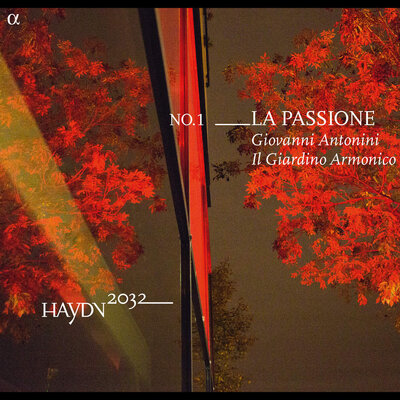
VOL. 1 _LA PASSIONE
CD
Giovanni Antonini, Il Giardino Armonico
Symphonies No.1, No.39, No.69
Christoph Willibald Gluck (1714–1787): Don Juan ou Le Festin de Pierre
Available at:
Bider&Tanner, Basel
Download / Stream
VOL. 1 _LA PASSIONE
Vinyl-LP with book (download code CD included)
Giovanni Antonini, Il Giardino Armonico
Symphonies No.1, No.39, No.69
Christoph Willibald Gluck (1714–1787): Don Juan ou Le Festin de Pierre
Essay "Passion" by Bernhard Lassahn
Available at:
Bider&Tanner, Basel
Joseph Haydn Stiftung, Basel
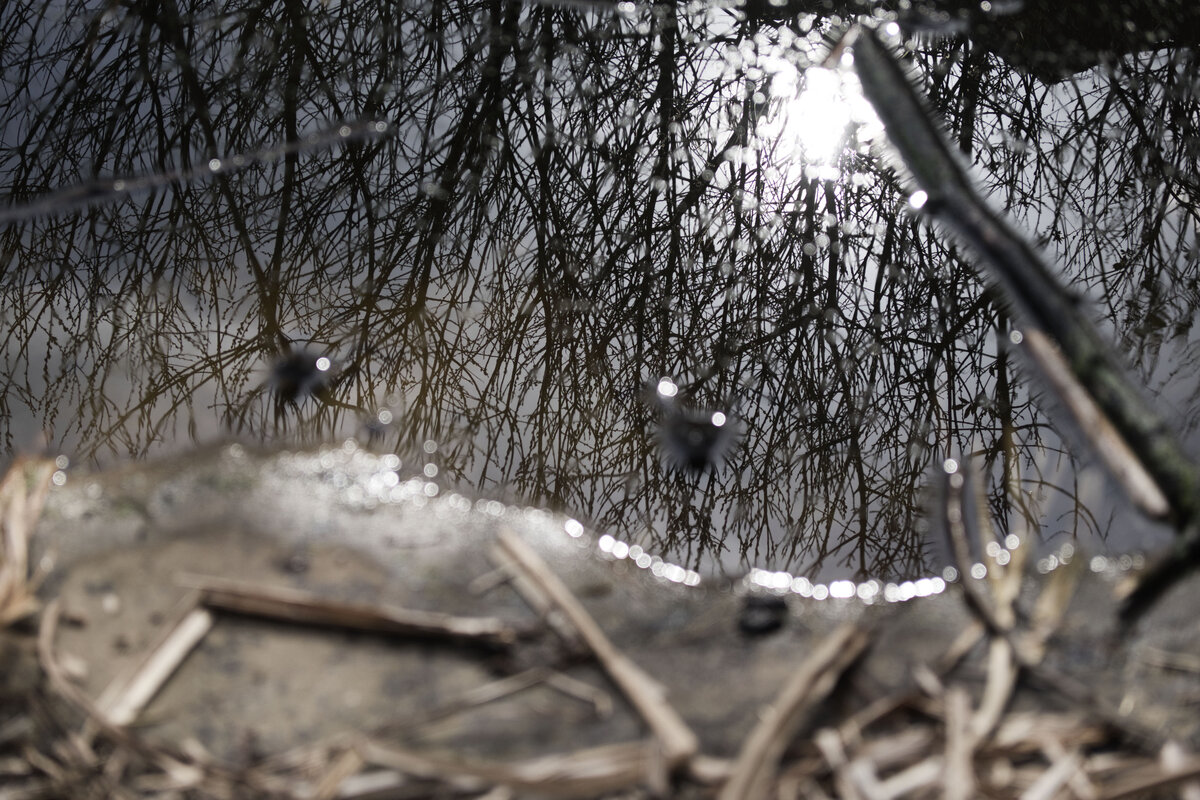
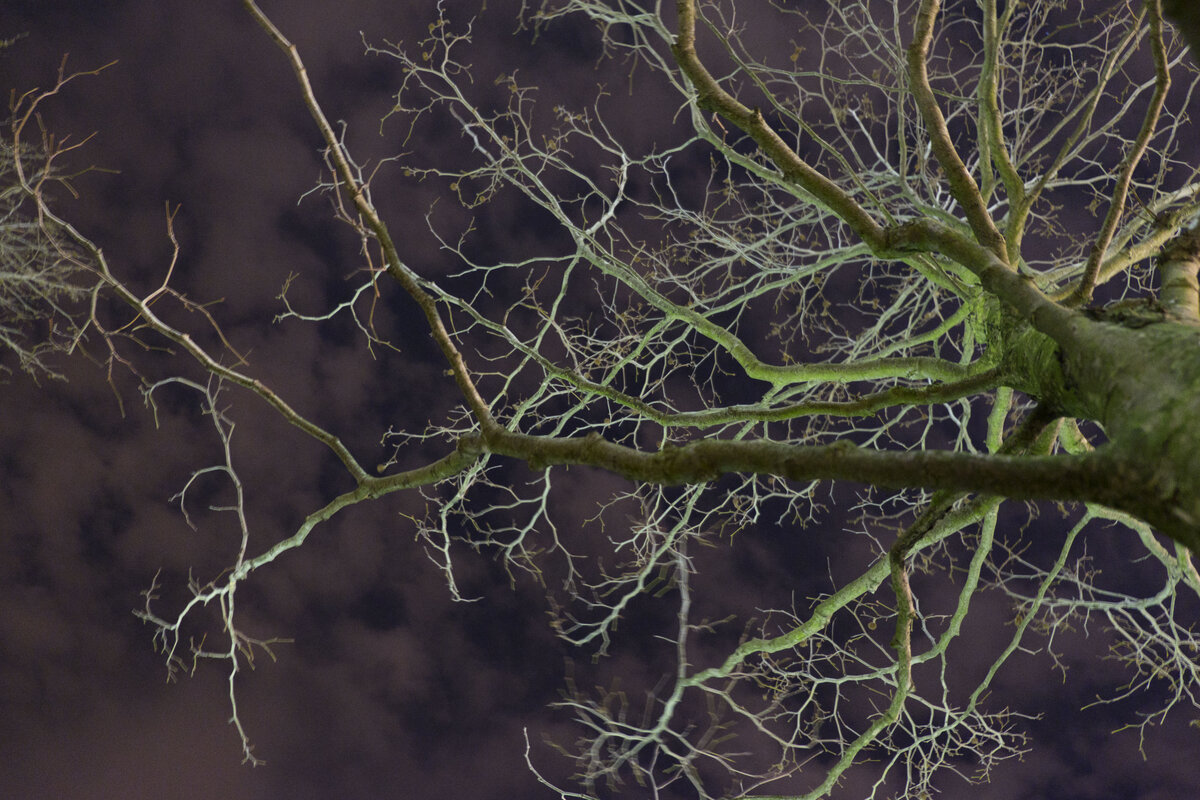
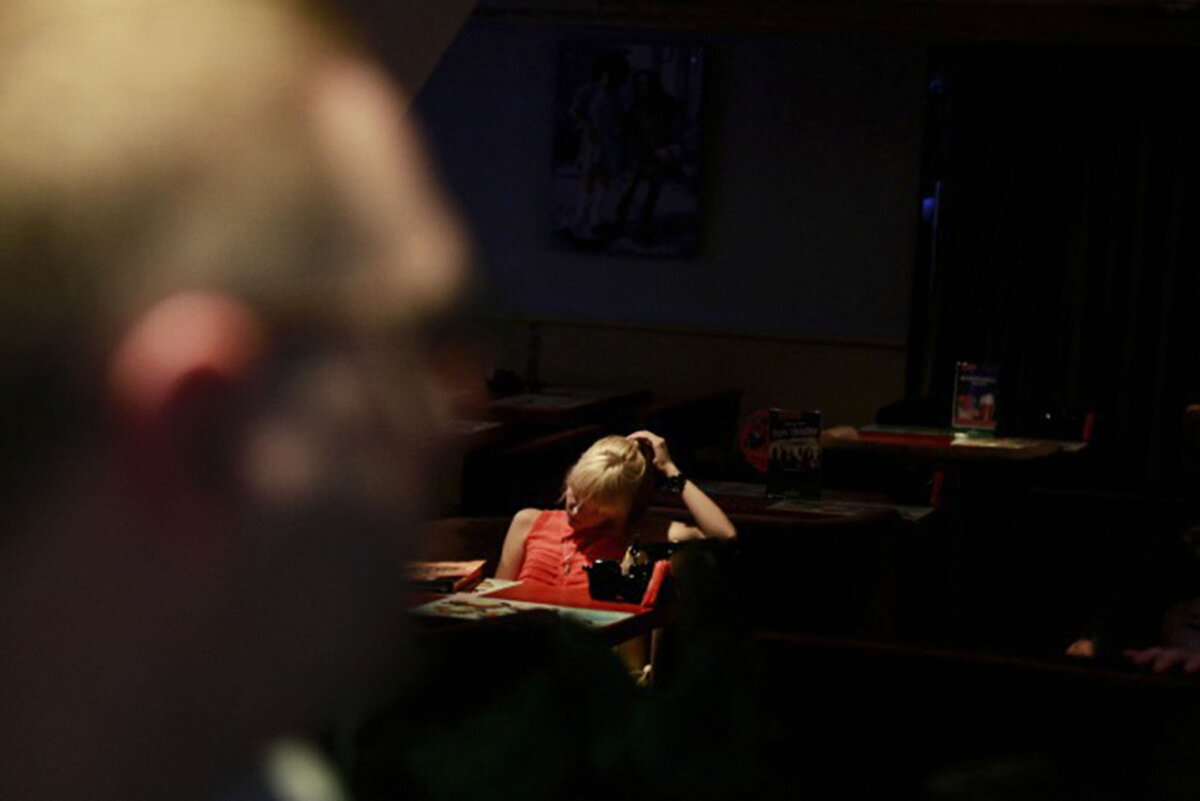
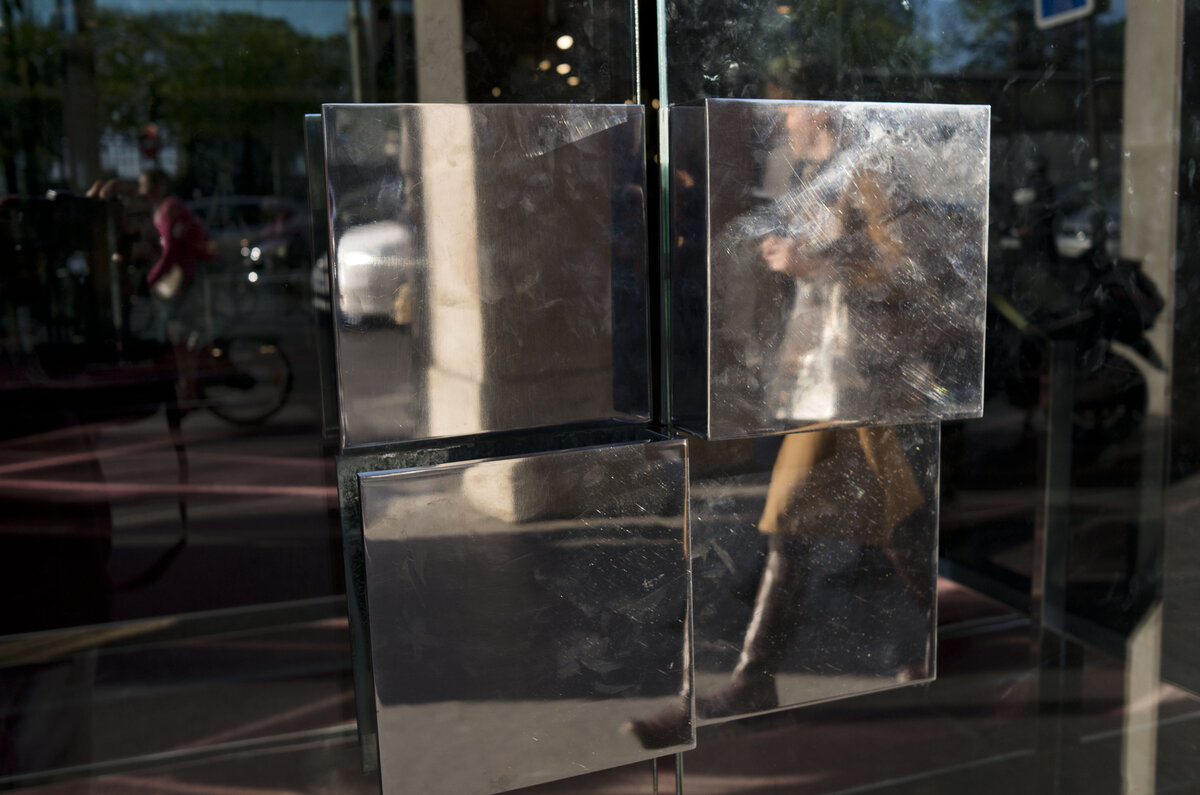
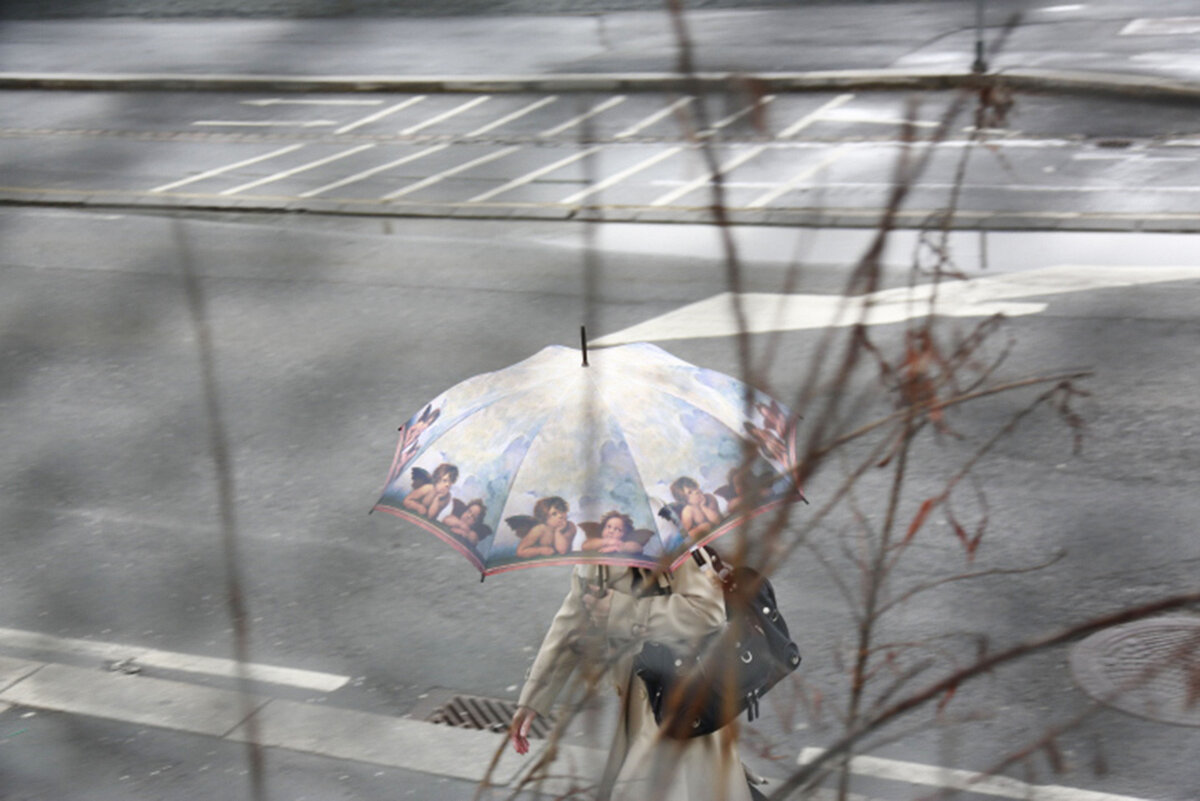
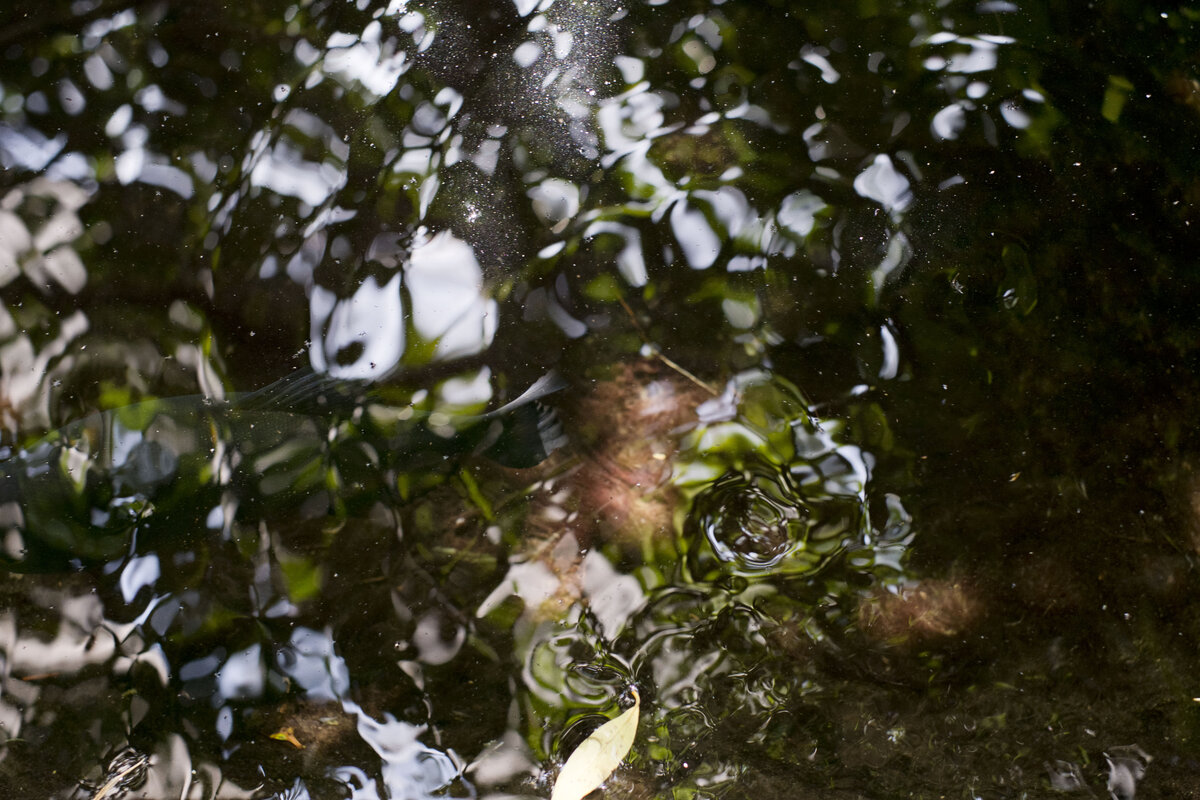
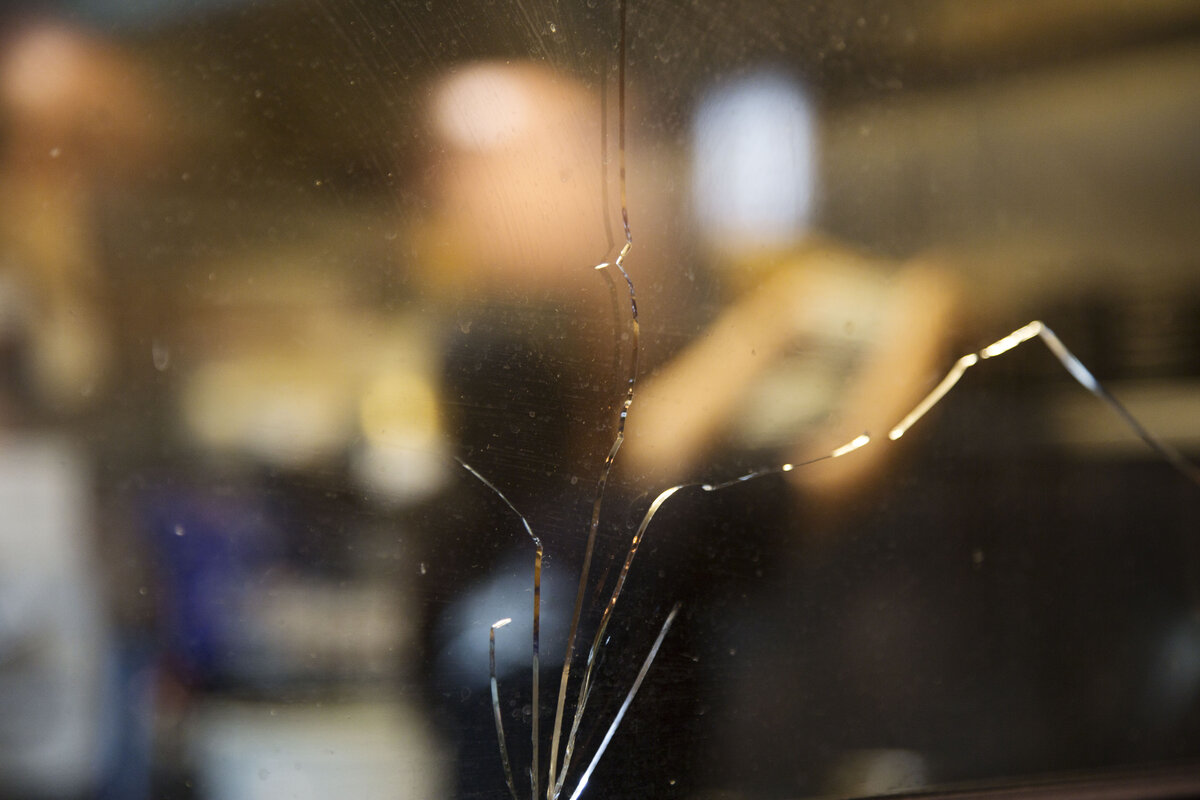
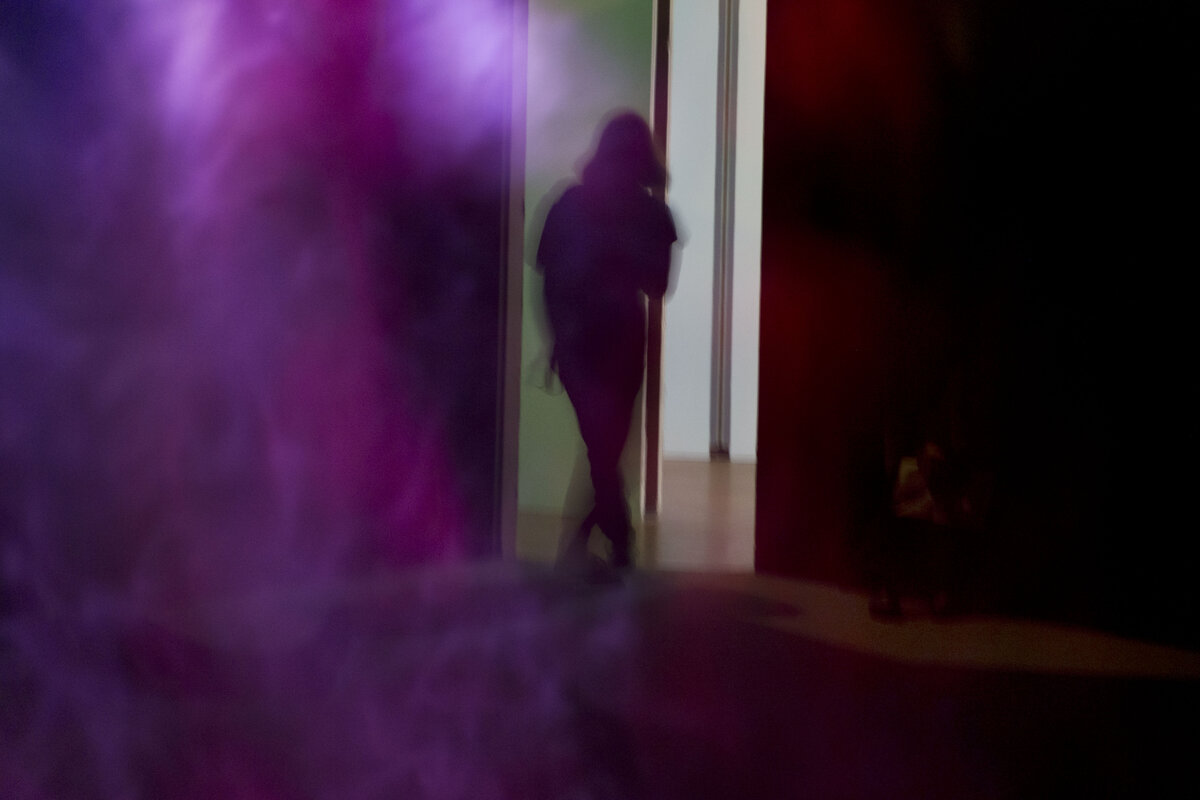

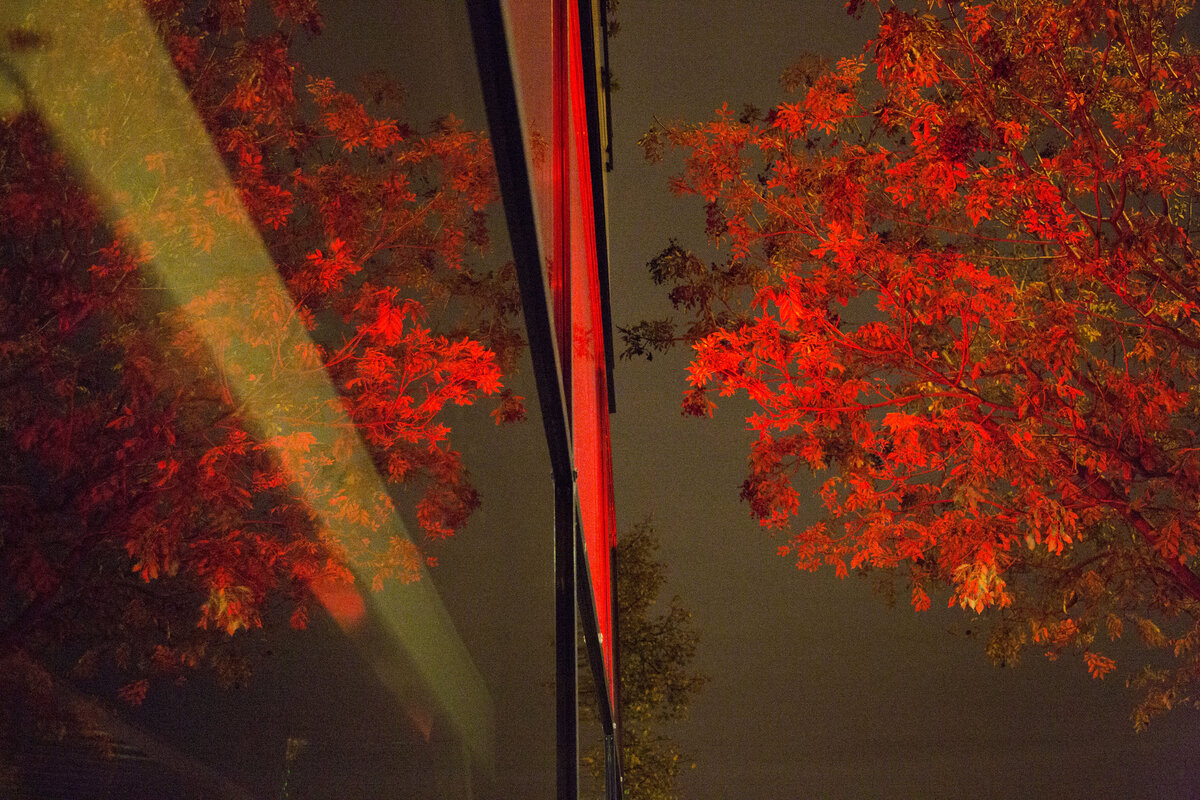
© Gueorgui Pinkhassov / Magnum Photos
Biography
Photographer, Magnum Photos
Gueorgui Pinkhassov
Photographer, Magnum Photos
Pinkhassov's interest in photography began while he was still at school. After studying cinematography at the VGIK (the Moscow Institute of Cinematography), he went on to work at the Mosfilm studio and then as a set photographer. His work was noticed by the prominent Russian filmmaker Andrei Tarkovsky, who invited Pinkhassov to the set to make a reportage about his film «Stalker» (1979).
Pinkhassov moved permanently to Paris in 1985. He joined Magnum Photos in 1988. He works regulary for the international press, particularly for Geo, Actuel and the New York Times Magazine.
The essay "Passion" by Bernhard Lassahn was published in the vinyl edition vol. 1.
Biography
Writer
Bernhard Lassahn
Writer
Bernhard Lassahn is a German author, singer songwriter and cabaret artist. He is the first laureate of the cabaret award «Salzburger Stier» and member of the German P.E.N. association. Along with Walter Moers and Rolf Silber he wrote the stories around Captain Bluebear for «Die Sendung mit der Maus» (The Program with the Mouse). He is the author of the highly acclaimed novel «Aboard the black ship».
Lassahn lives in Berlin and performs regularily at poetry readings of Zebrano Theatre. He is also author for «The Axis of the Good» and «Cuncti» blogs.










